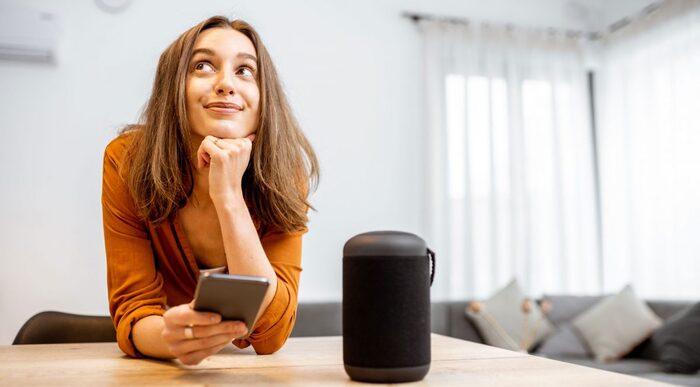The way people shop online is evolving fast. With over 50% of U.S. consumers now using voice assistants like Alexa, Google Assistant, and Siri to search for products, voice commerce is no longer a futuristic concept, it’s happening now. But here’s the real question: Is your e-commerce store prepared to capitalize on this shift?
Why Voice Commerce Is More Than Just a Trend
Voice shopping isn’t just a novelty; it’s a game-changer in e-commerce innovation. As AI-powered assistants become more integrated into everyday life, consumers expect seamless, hands-free shopping experiences. In fact, studies predict voice commerce sales will surpass $40 billion by 2025.
For Shopify store owners, this presents a massive opportunity to tap into a growing segment of shoppers who prefer convenience over traditional browsing. But optimizing for voice search requires more than just hoping customers will find you, you need a clear strategy.
The Challenge: Adapting to Voice-First Shopping Habits
Unlike traditional e-commerce searches, voice shopping relies on natural language processing (NLP) and conversational queries. This means your typical keyword-driven SEO strategy needs to evolve. Instead of customers typing “best running shoes,” they might ask, “What are the best running shoes for beginners?”
The challenge? If your store isn’t optimized for these voice-driven queries, you’re invisible to potential buyers.
How to Optimize Your Shopify Store for Voice Commerce
1. Enhance Your SEO for Voice Search
Voice searches are typically longer and more conversational than text-based searches. To rank higher in search results, focus on:
- Long-tail keywords like “best affordable winter boots for women.”
- Question-based queries (e.g., “What is the best laptop for gaming under $1000?”).
- Conversational content that aligns with how people naturally speak.
A Shopify store selling kitchenware, for example, could optimize product descriptions by answering common customer questions directly in the copy: “What is the best non-stick pan for pancakes?”
2. Make Your Store Voice-Assistant Friendly
To ensure your store is compatible with voice shopping, consider integrating with platforms like Amazon Alexa or Google Shopping Actions. This allows voice assistants to pull product information directly from your store and facilitate seamless purchases.
Additionally, ensure:
- Your product descriptions are clear, structured, and easy to understand.
- Your checkout process is streamlined for frictionless purchases.
- Your inventory is regularly updated to avoid mismatches in availability.
3. Leverage AI and Chatbots for Personalized Recommendations
AI-driven chatbots can enhance the voice commerce experience by offering:
- Personalized product suggestions based on browsing history.
- Instant customer support for common inquiries.
- Voice-activated shopping assistants that guide users through their purchase journey.
For example, a Shopify apparel store can use AI to suggest clothing sizes or complementary items based on previous purchases.
4. Optimize for Local Voice Searches
With 46% of voice searches seeking local business information, optimizing for local SEO is crucial. Ensure:
- Your Google Business Profile is up-to-date.
- Your website includes location-based keywords (e.g., “organic skincare products in Austin”).
- Your store is mobile-friendly, as most voice searches happen on smartphones.
5. Speed Up Your Site for Better Voice Search Performance
Voice searches favor fast-loading websites. Google prioritizes sites that:
- Load in under 3 seconds.
- Have clean, structured data for easy indexing.
- Use compressed images and a lightweight theme to improve performance.
A Shopify store with slow page speeds risks losing customers who expect instant results.
Real-World Example: How Brands Are Winning with Voice Commerce
Take Domino’s Pizza as an example. They embraced voice commerce early, allowing customers to order pizzas using Alexa or Google Assistant. By removing friction from the ordering process, they increased customer retention and sales.
Another case is Nestlé, which optimized its recipes for voice search, allowing customers to get step-by-step cooking instructions via voice assistants. This not only boosted engagement but also increased brand loyalty.
The Future of Voice Commerce: What to Expect
As voice technology advances, we can expect:
- More AI-driven personalization, with assistants learning shopping preferences over time.
- Seamless voice payments, making transactions faster and more secure.
- Greater integration with smart home devices, enabling purchases from refrigerators, mirrors, or even cars.
Final Thoughts: Is Your Store Ready?
Voice shopping isn’t a passing trend, it’s reshaping how consumers interact with brands. The good news? Shopify merchants who adapt now can gain a competitive edge and capture a new wave of hands-free shoppers.

